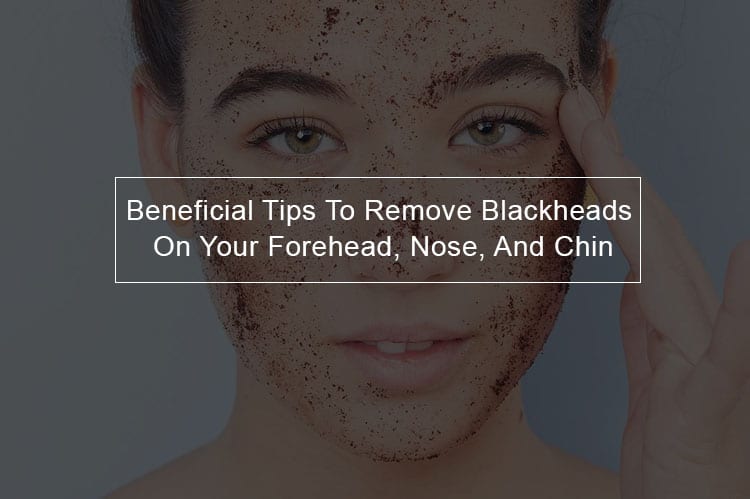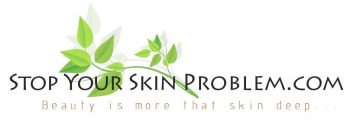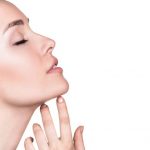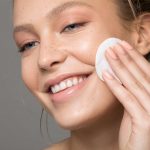
Physical exfoliants use beads, nut shells, sugar, salt, and so on. To mechanically exfoliate dead skin cells. The problem persists when individuals choose overly abrasive formulas and apply far too much pressure. But that doesn’t mean you ignore physical exfoliants altogether. Instead, do away with harsh scrubs and start going for gentler alternatives. Contrary to rough formulas, cleansing grains will polish away dirt, oil, impurities, and dead skin cells and flush out pores, without suffering irritation. These are the ideal face washes for acne for every stage of your life.
Ways to Get Rid of Blackheads on Nose, Chin and Forehead
Exfoliate approximately three times each week to dissolve dead skin
Dead skin is among the many things that can block your pores. You should stick to vigilant exfoliation plan using a washcloth (beginner level), a mild enzyme cleanser (intermediate), or a glycolic peel (advanced, as it is chemical exfoliation). Plan to exfoliate twice each week, but some dermatologists even recommend going up to three times every week if you have oily skin that is susceptible to blackheads. Just ensure you moisturize after every exfoliating session. You have to moisturize because exfoliants tend to be very drying to the skin surface. If your skin is dehydrated, your oil production overcompensates, creating more oil and more blackheads.
Gently Exfoliate Using BHAs and AHAs
In the past, you may have heard that exfoliating produces an adverse effect on acne. It can be true for inflammatory acne, as the process can cause further irritation and redness. For blackheads, though, regular exfoliation can assist in eliminating excessive amounts of dead skin cells that can result in blocked pores. The process may also softly remove current blackheads. Instead of looking for harsh scrubs, shift your attention to beta hydroxy and alpha acids ( BHAs and AHAs). Glycolic acid is the most common kind of AHA, and salicylic acid is a prominent BHA. Both AHAs and BHA function by removing the top layer of your skin. In theory, this can improve the appearance of wrinkles and age spots, all while cleansing pores and making your skin softer. You’ll find that BHAs are more widely available on the market, and in some cases, they’re more affordable too.
Consider a chemical peel
Chemical peels are traditionally in use for anti-aging benefits, such as minimize fine lines and age spots. The peels often contain AHAs, and they function by removing the top layer of skin.
Theoretically, you should be able to reveal smoother, refreshed-looking skin after going through the process. Though it is not a primary treatment for blackheads, chemical peels can remove dead skin cells and shrink enlarged pores. This treatment method may be especially beneficial if you’re looking for anti-aging benefits too.
Chemical exfoliation (like acid pads or a peel) are an excellent way to avoid irritating the skin through over-exfoliating. Gentle exfoliating acids, such as alpha hydroxy or glycolic acids, are an effective way to break down the dead skin and oil clogging the pore. Other acids such as salicylic acid and lactic acid can have exfoliating qualities that assist in preventing excess oil and dirt from getting stuck within the follicles.
Choose the right exfoliating acid for your skin type
Regarding incorporating the right percentage of exfoliating acid in your beauty regimen, the recommendation is 10 percent for dry skin, 20 percent for oily skin, and 30 percent for tougher parts on the back that can get blackheads. A lighter percentage might not get the results you seek; too large and you'll irritate your skin.
For gentle mechanical exfoliation, try a microdermabrasion tool
In case you don’t have time to make it to the doctor’s office you can give yourself a mini at-home facial instead with this dermatologist-approved remedy. Microdermabrasion is like taking a handheld vacuum to your face to slough away dead skin cells from the surface layer. It assists in stimulating collagen production and increasing the absorption of skin-care products.
Caution When Using Exfoliation For Blackhead Removal
Exfoliation is the secret to destroying and preventing blackheads
Keeping blackheads at bay is a maintenance deal. You need to do it every day. More specially, we're talking about regular exfoliation. As far as prevention goes, dermatologists recommend chemical exfoliants like salicylic and glycolic acids, specifically in the form of cleansers, pads, and toners. If you wash using a 2 percent salicylic acid cleanser, followed by glycolic exfoliation nightly, coupled with a toner twice a day. Try a glycolic-acid infused pads, which are easy to swipe across your entire face quickly.
If you're trying to eliminating existing blackheads, follow all of that advice and include some physical exfoliation. Three times each week, immediately after bathing when the steam has softened the stuff within your pores, gently massage a scrub on any parts where you have blackheads.
How to Exfoliate Your Nose?
The skin on your nose is thick, and it has more oil glands than any other parts of the face. In this way, caring for the nose is different than caring for the cheeks, forehead or chin. Your nose may be susceptible to blackheads, clogged pores, and pimples- or it may appear reddish and flaky as a result of sun and wind; in either case, it will benefit from consistent exfoliation that can eliminate dead, dry skin cells. Medicated cleansing pads are an impactful and sanitary way to exfoliate your nose. You can alternatively make simple scrubs from components found in most kitchens.
Ingredients For A Nose Exfoliation Process
- Soft towel
- Mild facial cleanser
- Beta-hydroxy and alpha-hydroxy acid cleansing pads
- Moisturizer if your skin is dry
- Sunscreen
- Sugar or any natural exfoliants
- Jojoba oil or Olive oil
- Coffee grinder or blender
Cleansing Pads For Your Nose
Step 1. Cleanse your face using a mild cleanser, then wash off using warm water and dab it dry with a soft towel.
Step 2. Swipe your nose gently with a cleansing pad that has beta-hydroxy and alpha-hydroxy acid. Do it again using a second pad if the first one gets soiled. Limit exfoliation to a single treatment before you sleep if you suffer from skin sensitivity and dryness. However, you can include a second exfoliation once you get up if you experience no redness or irritation. If you have oily skin, you can safely exfoliate two nights each week.
Step 3. Apply a light moisturizer on your skin after exfoliation in case your nose is dry. Avoid moisturizing if your skin is oily because it'll result in a clog within your pores.
DIY Exfoliation Solution
1. Make a Natural Exfoliant Paste. Combine one tablespoon sugar with just adequate lukewarm water to create a thick paste. If your skin is dry, mix the sugar with jojoba oil or olive oil. Replace sugar with natural components like cornmeal, wheat germ or uncooked oatmeal. Grind harsh elements in a coffee grinder or blender first.
2. Wash Your Face Using a Gentle Cleanser. Rinse your face off using warm water and a mild cleanser, then apply the scrub gently over your nose.
3. Use a Circular Motion To Massage The Exfoliant Scrub. Massage the scrub into your nose for two to three minutes, in a gentle, circular manner.
4. Rinse Your Face and Dry it up After Using the Exfoliant Scrub. Wash off the scrub with warm water, then dab your nose dry with a soft towel.
5. Moisturizers For Those With a Dry Skin. Use a moisturizer in case your skin is dry.




